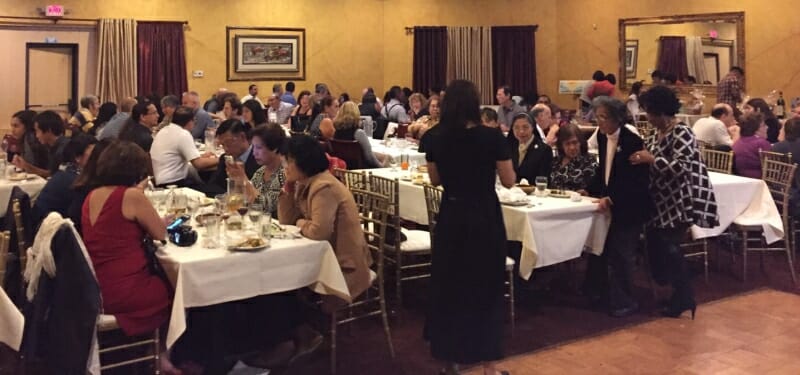
Dec 10, 2015 | Non categorizzato
All of us here are involved in helping refugees to integrate in our coundry,” they write from Germany. “Some of us give German lessons, some provide lodging, some give of their time to be with the refugees. We are currently waiting for the arrival of 9 unaccompanied minors from Syria and Afghanistan. They’ll live for six months at our centre in Ottmaring where they will be assisted by social workers from the city.” 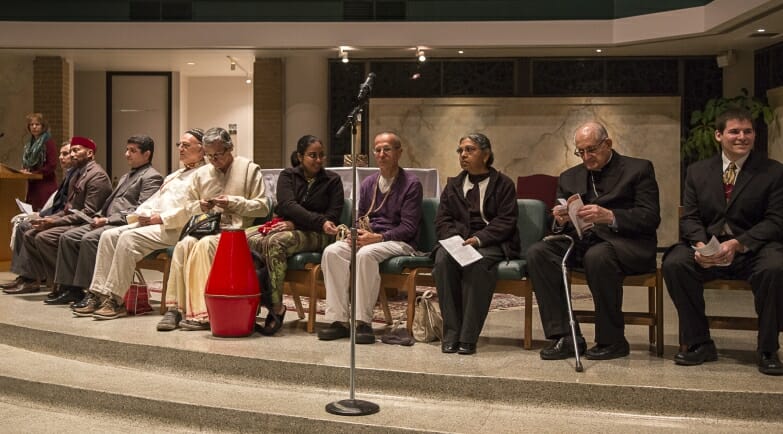 “Here in Dallas,” they write from Texas, “we held a peace march to raise funds for Syrian refugees.” “In Houston “We got together for a day of team building. With games, work groups, and so forth we learned how to be a team. On November 22 we held an interreligious prayer for peace. It was attended by Jews, Muslims, Hindus and Christians. The Archbishop also joined us.”
“Here in Dallas,” they write from Texas, “we held a peace march to raise funds for Syrian refugees.” “In Houston “We got together for a day of team building. With games, work groups, and so forth we learned how to be a team. On November 22 we held an interreligious prayer for peace. It was attended by Jews, Muslims, Hindus and Christians. The Archbishop also joined us.”  From California they tell us that the benefit dinner for refugees from the Middle East included a hundred people from different cultures and Churches. After praying for the victims of the terrorist attacks in Beirut and Paris, some young people presented several of their projects for refugees, from around the world, which are connected to the United World Project, an international platform for providing visibility to small and large-scale projects. Everyone agreed that through dialogue everyone can sow hope in their own corners of the world. A benefit dinner will also be held in San Francisco in December. “From October 30th, at Centro Luminosa in Spain, a community prayer service will be held every Saturday evening, animated by different groups of people each time: youth, families, priests. . .) It will be the starting point for becoming more actively involved in concrete efforts for peace. There was a very energetic response from Bahia Blanca, Argentina, following the November 20th event in the Square. The idea was to invite everyone – absolutely everyone – to learn more about building peace. The launching of the event which was covered by a local radio station, was then broadcast on social media. At 19:30 the Square began to be covered in colour and music. Banners, posters and fliers offered ideas on how to resolve conflicts through dialogue and thus generate peace: giving a smile, discussing without shouting, doing to others what you would have done to you, and so on. On stage there were songs, brief presentations and dances (one choir offered to sing because of an invitation on Facebook.) “The experience of today is only a first step, which confirms that when you are together small things become powerful. And so it is urgent that we get moving beginning with our daily life.” In Parana, Argentina, the local community organised two ecumenical evenings of prayer for peace and for the persecuted because of their faith, animated by members of the different Churches with whom they are in contact. With testimonies of refugees and the families that took them in, besides the heartfelt prayer, they wanted to give visibility to the amount of road we have already covered in learning about, welcoming and including others. From Tokyo, Japan, they report a large sum of money that was gathered at the “Syrian Cafe” (a place for encounter and dialogue), which will be sent to Damascus. And we add that in Asunción, Paraguay, on December 18-20 there will be a camp for peace, organised by Teens for Unity, one of the junior sections of the Focolare.
From California they tell us that the benefit dinner for refugees from the Middle East included a hundred people from different cultures and Churches. After praying for the victims of the terrorist attacks in Beirut and Paris, some young people presented several of their projects for refugees, from around the world, which are connected to the United World Project, an international platform for providing visibility to small and large-scale projects. Everyone agreed that through dialogue everyone can sow hope in their own corners of the world. A benefit dinner will also be held in San Francisco in December. “From October 30th, at Centro Luminosa in Spain, a community prayer service will be held every Saturday evening, animated by different groups of people each time: youth, families, priests. . .) It will be the starting point for becoming more actively involved in concrete efforts for peace. There was a very energetic response from Bahia Blanca, Argentina, following the November 20th event in the Square. The idea was to invite everyone – absolutely everyone – to learn more about building peace. The launching of the event which was covered by a local radio station, was then broadcast on social media. At 19:30 the Square began to be covered in colour and music. Banners, posters and fliers offered ideas on how to resolve conflicts through dialogue and thus generate peace: giving a smile, discussing without shouting, doing to others what you would have done to you, and so on. On stage there were songs, brief presentations and dances (one choir offered to sing because of an invitation on Facebook.) “The experience of today is only a first step, which confirms that when you are together small things become powerful. And so it is urgent that we get moving beginning with our daily life.” In Parana, Argentina, the local community organised two ecumenical evenings of prayer for peace and for the persecuted because of their faith, animated by members of the different Churches with whom they are in contact. With testimonies of refugees and the families that took them in, besides the heartfelt prayer, they wanted to give visibility to the amount of road we have already covered in learning about, welcoming and including others. From Tokyo, Japan, they report a large sum of money that was gathered at the “Syrian Cafe” (a place for encounter and dialogue), which will be sent to Damascus. And we add that in Asunción, Paraguay, on December 18-20 there will be a camp for peace, organised by Teens for Unity, one of the junior sections of the Focolare.
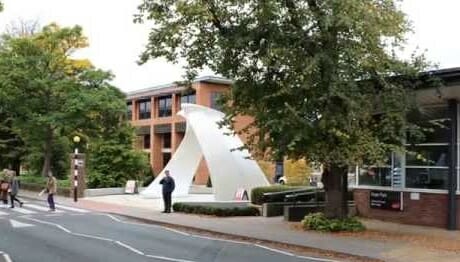
Dec 9, 2015 | Non categorizzato
 A new gate has been opened at Hope Park, Liverpool, to replace the tall walls that have historically separated the colleges of Hope University , England. The new architectural structure joins two university schools, one Roman Catholic and the other Anglican, which comprise the first and only ecumenical university of Europe. The exhibition, which was inaugurated on 28 September, was organised by the Ave Arts Centre in Loppiano. The seven artists who work there aim to express, through their artwork, the ideals of unity and universal brotherhood which inspired Chiara Lubich. The partnership with the art studio was born from a visit by Vice-Chancellor and Rector, Dr. Phillay to the Internationanl Centre of Loppiano for a conference at Sophia University Institute. At the dedication ceremony of the New Gate, the Vice-Chancellor explained the inspiration for the shape and design of the gate which stems from the tradition of the Maori people in New Zealand, whose villages had “Waharoa,” an open gate that became a symbol of the village and a sign of openness and welcome to guests and visitors. “In the same way,” continued Dr. Phillay, “this new gate marks the entrance for students and professors into the ‘community of life’ of Hope University, focused – in accordance with the orientation of Cardinal John Henry Newman, towards a wholisitc cultural and human formation, capable of ‘accepting the value of one’s own academic discipline within the context of all the others.” Nunzia Bertali, from the Italian Consulate, officially inaugurated the New Gate by cutting the ribbon. She said: “What a great occasion and privilege to be asked to inaugurate the New Gate. I can only be proud of this link between England and Italy. It is a fantastic idea and great opportunity to link the two countries.” Watch the video. New Gate, inspiration at the service of unity Sculptress Erika Ivacson from the Ave Centre, described the New Gate in this way: “It is an arch, a bridge that is born from the encounter between two similar yet distinct elements. In the language of sculpture the two distinct forms have reached a harmony and a unity in diversity. Passing through the New Gate, anyone should find themself in a fulfilling experience that points to something greater, to belonging and identity. The Biblical texts inserted on the interior of the sculpture echo the message. And as the plaque at the side of the sculpture states: May passing through this gate each day be a living affirmation of the ecumenical foundations of this univeristy.
A new gate has been opened at Hope Park, Liverpool, to replace the tall walls that have historically separated the colleges of Hope University , England. The new architectural structure joins two university schools, one Roman Catholic and the other Anglican, which comprise the first and only ecumenical university of Europe. The exhibition, which was inaugurated on 28 September, was organised by the Ave Arts Centre in Loppiano. The seven artists who work there aim to express, through their artwork, the ideals of unity and universal brotherhood which inspired Chiara Lubich. The partnership with the art studio was born from a visit by Vice-Chancellor and Rector, Dr. Phillay to the Internationanl Centre of Loppiano for a conference at Sophia University Institute. At the dedication ceremony of the New Gate, the Vice-Chancellor explained the inspiration for the shape and design of the gate which stems from the tradition of the Maori people in New Zealand, whose villages had “Waharoa,” an open gate that became a symbol of the village and a sign of openness and welcome to guests and visitors. “In the same way,” continued Dr. Phillay, “this new gate marks the entrance for students and professors into the ‘community of life’ of Hope University, focused – in accordance with the orientation of Cardinal John Henry Newman, towards a wholisitc cultural and human formation, capable of ‘accepting the value of one’s own academic discipline within the context of all the others.” Nunzia Bertali, from the Italian Consulate, officially inaugurated the New Gate by cutting the ribbon. She said: “What a great occasion and privilege to be asked to inaugurate the New Gate. I can only be proud of this link between England and Italy. It is a fantastic idea and great opportunity to link the two countries.” Watch the video. New Gate, inspiration at the service of unity Sculptress Erika Ivacson from the Ave Centre, described the New Gate in this way: “It is an arch, a bridge that is born from the encounter between two similar yet distinct elements. In the language of sculpture the two distinct forms have reached a harmony and a unity in diversity. Passing through the New Gate, anyone should find themself in a fulfilling experience that points to something greater, to belonging and identity. The Biblical texts inserted on the interior of the sculpture echo the message. And as the plaque at the side of the sculpture states: May passing through this gate each day be a living affirmation of the ecumenical foundations of this univeristy.
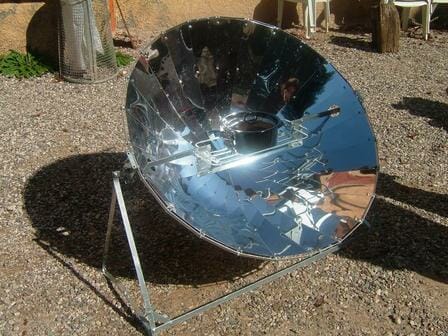
Dec 9, 2015 | Focolare Worldwide
 The Solar kitchen project for Mont-Organisé (Haiti) «was conceived due to the desire to help Haiti counter its social and environmental crisis related to deforestation, through the introduction of kitchens powered by solar energy. This device is based on solar energy concentration that generates thermal energy from the sunlight passed through a lens. The energy is amassed in a thermal “battery” that can withhold the heat for 20 hours, thus enabling cooking to be done also at night. The materials chosen to make the kitchens are sustainable and biodegradable, and the device obviously does not require fuel, explained the report drafted in view of the climate conference in Paris (30 November – 11 December 2015). It is dedicated to a series of excellent experiences in the Italian electrical supply chain to produce or optimise energy without emissions. The project, in fact, was singled out from the “100 Italian energy stories” of Enel and the Symbola Foundation. The Solar Kitchens project for Mont-Organisé (Haiti) was presented last 4 July at the Expo 2015 in Milan by AFNonlus, in collaboration with the National Microcredit Agency, the Federico II University of the Agricultural Dept. of Naples, Tesla IA Ltd. and PACNE ONG. It has now landed in the World Climate Conference (Cop21) of Paris, where political leaders and experts of 190 countries are involved in delineating a programme that can save the planet. «The climate challenge which from 30 November to 11 December will see the world gathered in Paris for the COP21, does not only regard the environment,» the Report underlined, but «is a geopolitical, technological, economic and social challenge. It is a challenge for the future, which we can overcome if we firmly undertake a green economy, and clean and efficient energy.” Enel and Symbola recount a new course consisting of innovation and quality, and research and competitiveness in the search for the ”100 Italian Energy Stories.” It is a programme for sustainable energy undertaken in our country [Italy] by enterprises, research agencies and associations.» AFNonlus (Association of Action for New Families non-profit org.) was inspired by the principles of the Focolare Movement which has been operating for over 30 years in 50 countries to support the disadvantaged families and children through projects of cooperation for development.
The Solar kitchen project for Mont-Organisé (Haiti) «was conceived due to the desire to help Haiti counter its social and environmental crisis related to deforestation, through the introduction of kitchens powered by solar energy. This device is based on solar energy concentration that generates thermal energy from the sunlight passed through a lens. The energy is amassed in a thermal “battery” that can withhold the heat for 20 hours, thus enabling cooking to be done also at night. The materials chosen to make the kitchens are sustainable and biodegradable, and the device obviously does not require fuel, explained the report drafted in view of the climate conference in Paris (30 November – 11 December 2015). It is dedicated to a series of excellent experiences in the Italian electrical supply chain to produce or optimise energy without emissions. The project, in fact, was singled out from the “100 Italian energy stories” of Enel and the Symbola Foundation. The Solar Kitchens project for Mont-Organisé (Haiti) was presented last 4 July at the Expo 2015 in Milan by AFNonlus, in collaboration with the National Microcredit Agency, the Federico II University of the Agricultural Dept. of Naples, Tesla IA Ltd. and PACNE ONG. It has now landed in the World Climate Conference (Cop21) of Paris, where political leaders and experts of 190 countries are involved in delineating a programme that can save the planet. «The climate challenge which from 30 November to 11 December will see the world gathered in Paris for the COP21, does not only regard the environment,» the Report underlined, but «is a geopolitical, technological, economic and social challenge. It is a challenge for the future, which we can overcome if we firmly undertake a green economy, and clean and efficient energy.” Enel and Symbola recount a new course consisting of innovation and quality, and research and competitiveness in the search for the ”100 Italian Energy Stories.” It is a programme for sustainable energy undertaken in our country [Italy] by enterprises, research agencies and associations.» AFNonlus (Association of Action for New Families non-profit org.) was inspired by the principles of the Focolare Movement which has been operating for over 30 years in 50 countries to support the disadvantaged families and children through projects of cooperation for development.

Dec 8, 2015 | Non categorizzato
 The Indiction of the Jubilee of Mercy has taken the word “mercy” far beyond Vatican walls, and to the ears of the secular world it can sound outdated and laden with religious significance. The nonbeliever tends from the start to not accept the mystical meanings with which this word is usually invested, especially now as it is raised to disturbing centrality in worldly society. The nonbeliever finds synonyms, or presumed synonyms, that would allow the word to be taken beyond the borders of Christianity: pity, compassion, empathy . . . in a growing confusion that the online dictionaries are not able to reduce. The first impulse is to identify it with “pity,” the sentiment of people with “compassion,” of people who emotionally perceives the sufferings of others as their own and would like to alleviate them (and, by the way, in Christianity the term “pity” is close to the term “mercy”.) Well, then, why not “empathy” which is not a feeling but an ability to fully understand the state of soul of others, to place oneself in someone else’s shoes especially after the discovery by neurosurgeons on the mirror neurons that tends to confirm that empathy does not have its origins in intellectual effort but in the genetic code of the species? Words such as pity, mercy compassion, like all respectable words, will have their positive and negative meanings. Just think of the derogatory meaning of phrases such as: “I feel pity for you;” or “I pity you;” “He needs to be pitied.” What about the misericorde weapon that was used in medie-val times to deliver the death stroke, the “mercy stroke”? You will say that “mercy” is compassion, yes, but “active” compassion that is substantiated by action, by works. And it may be that it represents a fundamental concept, which is key to the Christian life, as the Dr. Cardinal W. Kasper underscores. Well, then you would need to distinguish between a Christian mercy and a secular mercy based on humanitarian values which, while they march side by side and intertwine, nevertheless belong to two different orders that are to be re-spected in their nature. Therefore, it is not a matter of contrasting secular good works with Christian good works, but of “searching for that hidden harmony that brings relief to the world;” and harmony – like dialogue – “is not given in homogeneity, but it lives in diversity. . .” Mario Frontini
The Indiction of the Jubilee of Mercy has taken the word “mercy” far beyond Vatican walls, and to the ears of the secular world it can sound outdated and laden with religious significance. The nonbeliever tends from the start to not accept the mystical meanings with which this word is usually invested, especially now as it is raised to disturbing centrality in worldly society. The nonbeliever finds synonyms, or presumed synonyms, that would allow the word to be taken beyond the borders of Christianity: pity, compassion, empathy . . . in a growing confusion that the online dictionaries are not able to reduce. The first impulse is to identify it with “pity,” the sentiment of people with “compassion,” of people who emotionally perceives the sufferings of others as their own and would like to alleviate them (and, by the way, in Christianity the term “pity” is close to the term “mercy”.) Well, then, why not “empathy” which is not a feeling but an ability to fully understand the state of soul of others, to place oneself in someone else’s shoes especially after the discovery by neurosurgeons on the mirror neurons that tends to confirm that empathy does not have its origins in intellectual effort but in the genetic code of the species? Words such as pity, mercy compassion, like all respectable words, will have their positive and negative meanings. Just think of the derogatory meaning of phrases such as: “I feel pity for you;” or “I pity you;” “He needs to be pitied.” What about the misericorde weapon that was used in medie-val times to deliver the death stroke, the “mercy stroke”? You will say that “mercy” is compassion, yes, but “active” compassion that is substantiated by action, by works. And it may be that it represents a fundamental concept, which is key to the Christian life, as the Dr. Cardinal W. Kasper underscores. Well, then you would need to distinguish between a Christian mercy and a secular mercy based on humanitarian values which, while they march side by side and intertwine, nevertheless belong to two different orders that are to be re-spected in their nature. Therefore, it is not a matter of contrasting secular good works with Christian good works, but of “searching for that hidden harmony that brings relief to the world;” and harmony – like dialogue – “is not given in homogeneity, but it lives in diversity. . .” Mario Frontini
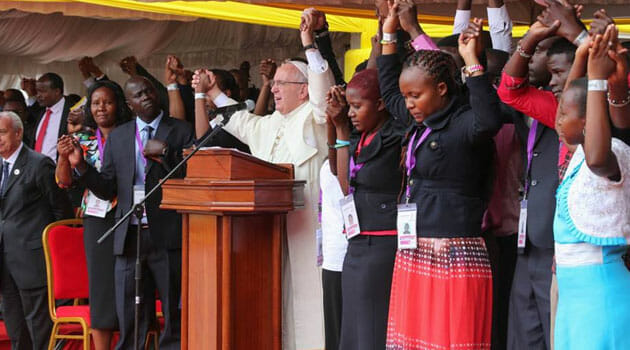
Dec 8, 2015 | Non categorizzato
 We can still vividly see the images that reached us from Bangui, the capital of the Central African Republic, where Pope Francis demonstrated great courage, and where he opened the first “Door of Mercy.” On that day, 29 November, he said: «Today Bangui has become the spiritual capital of the world. The Holy Year of Mercy was opened in advance in this land which also represents all the countries that are undergoing the cross of war. Bangui has become the spiritual capital of prayer for the Father’s mercy.» And in referring to the chosen date of 8 December, the Pope explained in the Bull that «This liturgical feast indicates the concrete mercy God has always shown to mankind from the very first dawning of the history of humanity. After the sin of Adam and Eve, God did not want to leave humanity alone in the hands of evil. This is why he ideated and made Mary holy and immaculate (see Eph 1.4), so she would be the Mother of man’s Redeemer. Before the gravity of sin, God responded with the fullness of forgiveness. Mercy will always be greater than sin, and nobody can ever place a limit to the love of God who forgives.» «On the feast of the Immaculate Conception – continued Francis – I will have the joy of opening the Holy Door. It will be on this occasion that whoever will enter the first Door of Mercy will experience the love of God who consoles, forgives and gives hope. » But opening the first “holy door” in faraway Bangui is not an amazing novelty, since Francis wishes many doors to open throughout the world, to give all Christians the chance to enter them with the same effects of interior renewal as for those who will enter the door in Rome, the centre of Christendom. In fact, in the “Bull” the Pope continued by indicating that “on the next Sunday, the third of Advent, ‘the Holy Door’ in the Cathedral of Rome, the Basilica of St. John Lateran will be opened. In the subsequent days, the Holy Door in the other Papal Basilicas will also be opened. On the same Sunday, I establish that in the local Cathedrals in every particular diocese in the world, other ‘Doors of Mercy’ will be opened for all the faithful, for the entire Holy Year.». He requested that this also be done in the Sanctuaries where pilgrims go, and in all the «sacred places where people are often blessed with grace and find the path of conversion.» Every country will thus be directly involved in «living this Holy Year as an extraordinary moment of grace and spiritual renewal.» The jubilee will, however, be celebrated in Rome «as in all the local Churches worldwide as a visible sign of the communion of the entire Church.» Read the entire text: The Bull
We can still vividly see the images that reached us from Bangui, the capital of the Central African Republic, where Pope Francis demonstrated great courage, and where he opened the first “Door of Mercy.” On that day, 29 November, he said: «Today Bangui has become the spiritual capital of the world. The Holy Year of Mercy was opened in advance in this land which also represents all the countries that are undergoing the cross of war. Bangui has become the spiritual capital of prayer for the Father’s mercy.» And in referring to the chosen date of 8 December, the Pope explained in the Bull that «This liturgical feast indicates the concrete mercy God has always shown to mankind from the very first dawning of the history of humanity. After the sin of Adam and Eve, God did not want to leave humanity alone in the hands of evil. This is why he ideated and made Mary holy and immaculate (see Eph 1.4), so she would be the Mother of man’s Redeemer. Before the gravity of sin, God responded with the fullness of forgiveness. Mercy will always be greater than sin, and nobody can ever place a limit to the love of God who forgives.» «On the feast of the Immaculate Conception – continued Francis – I will have the joy of opening the Holy Door. It will be on this occasion that whoever will enter the first Door of Mercy will experience the love of God who consoles, forgives and gives hope. » But opening the first “holy door” in faraway Bangui is not an amazing novelty, since Francis wishes many doors to open throughout the world, to give all Christians the chance to enter them with the same effects of interior renewal as for those who will enter the door in Rome, the centre of Christendom. In fact, in the “Bull” the Pope continued by indicating that “on the next Sunday, the third of Advent, ‘the Holy Door’ in the Cathedral of Rome, the Basilica of St. John Lateran will be opened. In the subsequent days, the Holy Door in the other Papal Basilicas will also be opened. On the same Sunday, I establish that in the local Cathedrals in every particular diocese in the world, other ‘Doors of Mercy’ will be opened for all the faithful, for the entire Holy Year.». He requested that this also be done in the Sanctuaries where pilgrims go, and in all the «sacred places where people are often blessed with grace and find the path of conversion.» Every country will thus be directly involved in «living this Holy Year as an extraordinary moment of grace and spiritual renewal.» The jubilee will, however, be celebrated in Rome «as in all the local Churches worldwide as a visible sign of the communion of the entire Church.» Read the entire text: The Bull
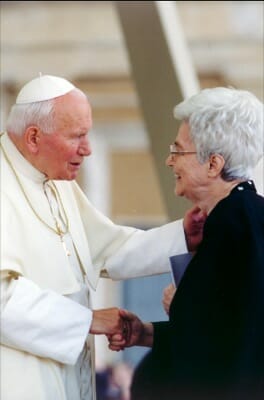
Dec 7, 2015 | Non categorizzato

(C) CSC Audiovisivi
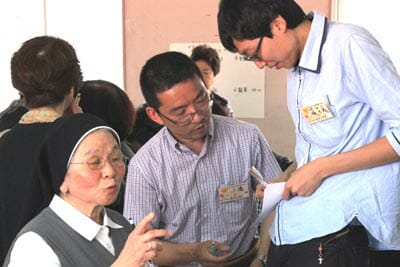
Dec 6, 2015 | Non categorizzato
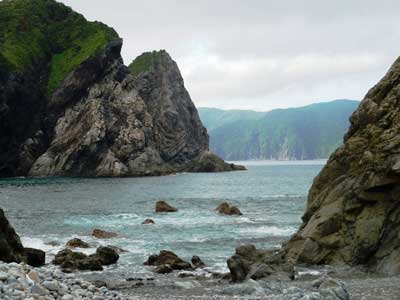 If you want to go to Okinawa from Kagoshima, midway along the route – after spending a night on the ship – you will come across the island of Amami. It is an enchanting place for its natural beauty, and the profound bond between the inhabitants themselves and with the environment. They say that in the rice planting season, the inhabitants had the custom of helping one another by going to each other’s homes when necessary. It was a lifestyle which the islanders still call the “bonding” spirit. Missionaries have landed on the Island ever since the 19th century, bringing the Christian message which took root among the population. With pride, the inhabitants of Amami boast of three bishops born on their island, besides a great number of priests, religious men and women. It was precisely one of these priests, who launched an idea in 1996 during a retreat held on the island: “Why don’t you look into the Focolare? It’s a place where people live evangelical love and unity.”
If you want to go to Okinawa from Kagoshima, midway along the route – after spending a night on the ship – you will come across the island of Amami. It is an enchanting place for its natural beauty, and the profound bond between the inhabitants themselves and with the environment. They say that in the rice planting season, the inhabitants had the custom of helping one another by going to each other’s homes when necessary. It was a lifestyle which the islanders still call the “bonding” spirit. Missionaries have landed on the Island ever since the 19th century, bringing the Christian message which took root among the population. With pride, the inhabitants of Amami boast of three bishops born on their island, besides a great number of priests, religious men and women. It was precisely one of these priests, who launched an idea in 1996 during a retreat held on the island: “Why don’t you look into the Focolare? It’s a place where people live evangelical love and unity.” 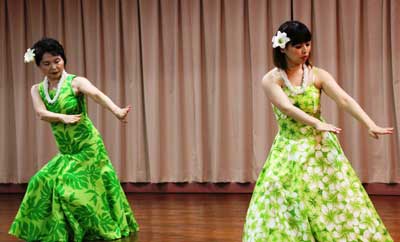 Immediately some of those present contacted the centre of Nagasaki and the following year, two of them, after a night on the ship and travel of more than five hours by car, arrived at Sasebo, two hours away from Nagasaki. A Mariapolis was then underway: a happening of a few days for those who wanted to know more about the spirituality of the Focolare. These two people certainly never imagined that 19 years later a Mariapolis would be held also in Amami! 19 years in which the road has not always been easy. Joys, new spiritual energies, but also misunderstandings and all types of suffering – overcome by mutual love intensively lived – consolidated the new community in unity. And since unity is always diffusive, the community expanded with the desire to let all know what they had discovered. They spoke with friends and acquaintances. They visited seven parishes. Last May, 150 people of the island and some from outside, participated in the Amami Mariapolis. Some of these did not frequent religious groups; others were Buddhists, and still others were of diverse beliefs. There were also five priests and the Bishop of Kagoshima, Bishop Koriyama who confirmed: “The Focolare really suits the bonding spirit of Amami.”
Immediately some of those present contacted the centre of Nagasaki and the following year, two of them, after a night on the ship and travel of more than five hours by car, arrived at Sasebo, two hours away from Nagasaki. A Mariapolis was then underway: a happening of a few days for those who wanted to know more about the spirituality of the Focolare. These two people certainly never imagined that 19 years later a Mariapolis would be held also in Amami! 19 years in which the road has not always been easy. Joys, new spiritual energies, but also misunderstandings and all types of suffering – overcome by mutual love intensively lived – consolidated the new community in unity. And since unity is always diffusive, the community expanded with the desire to let all know what they had discovered. They spoke with friends and acquaintances. They visited seven parishes. Last May, 150 people of the island and some from outside, participated in the Amami Mariapolis. Some of these did not frequent religious groups; others were Buddhists, and still others were of diverse beliefs. There were also five priests and the Bishop of Kagoshima, Bishop Koriyama who confirmed: “The Focolare really suits the bonding spirit of Amami.”  Suddenly, sometime later, he wrote a letter of thanks to the community: “…among the fruits the Focolare brings I saw a new culture of faith take root, and the possibility also for non-Christians to freely come in contact with the Church without fear.” And he hoped that the Mariapolis would not remain an isolated event, but be repeated under some other form of activity during the year. This encouragement filled all with joy. After discussing the matter, a letter was sent to all the parish priests of Amami, communicating the bishop’s augur, and the plan to hold a one-day Mariapolis, an event which took place last 25 October. The same letter also reached the Bishop who replied: “Congratulations! I am happy about this Mariapolis day, worthy to be celebrated and go down in the history of a new faith… I urge you to build, with a sole heart, the tradition of a new faith for the evangelization of the Amami Island.”
Suddenly, sometime later, he wrote a letter of thanks to the community: “…among the fruits the Focolare brings I saw a new culture of faith take root, and the possibility also for non-Christians to freely come in contact with the Church without fear.” And he hoped that the Mariapolis would not remain an isolated event, but be repeated under some other form of activity during the year. This encouragement filled all with joy. After discussing the matter, a letter was sent to all the parish priests of Amami, communicating the bishop’s augur, and the plan to hold a one-day Mariapolis, an event which took place last 25 October. The same letter also reached the Bishop who replied: “Congratulations! I am happy about this Mariapolis day, worthy to be celebrated and go down in the history of a new faith… I urge you to build, with a sole heart, the tradition of a new faith for the evangelization of the Amami Island.”

Dec 5, 2015 | Focolare Worldwide
 What pushed you to become a priest? A 13-year-old girl asked Don Marco, during an informal interview on the many “anecdotes” that have dotted his life and priesthood. «I was not counting on becoming a priest. I had only asked some advice from the people who were older and had more worldly experience than me, so as to see what humanity needs most today. I could have become a teacher or an engineer. I also liked architecture, or travelling. I liked so many things, and was doing well in school. Those were the years of the economic boom and I had all the possibilities. I was uncertain since I had received a university scholarship, but I wanted to be useful. So I booked an appointment with the Bishop. I wanted to ask him what he thought, about what humanity needs most. He was so busy that he did not have time to talk to me, and I was alone for hours, so much so that I thought: “surely humanity doesn’t need me, but perhaps not even the church needs me, and whoever said that you are so important? Perhaps I am not worth anything… but I love Jesus and will love him always, even if I turned out to be useless.” Finally, when the Bishop found time to speak with me, and asked me what I wanted, I didn’t want anything anymore! And so I told him that I could probably collaborate… He was surprised, undecided, but in the end he said: “Yesterday I laid the cornerstone of a church. When this church, will be finished six years from now, it will have no priest. Would you like to be the parish priest of that church?” But my first experience had been a choice of God, first of all, and not that of becoming a priest, but to follow God and love Jesus, even if I was useless, since Jesus in the end, will make you do something. » (Fr. Marco – Italy)
What pushed you to become a priest? A 13-year-old girl asked Don Marco, during an informal interview on the many “anecdotes” that have dotted his life and priesthood. «I was not counting on becoming a priest. I had only asked some advice from the people who were older and had more worldly experience than me, so as to see what humanity needs most today. I could have become a teacher or an engineer. I also liked architecture, or travelling. I liked so many things, and was doing well in school. Those were the years of the economic boom and I had all the possibilities. I was uncertain since I had received a university scholarship, but I wanted to be useful. So I booked an appointment with the Bishop. I wanted to ask him what he thought, about what humanity needs most. He was so busy that he did not have time to talk to me, and I was alone for hours, so much so that I thought: “surely humanity doesn’t need me, but perhaps not even the church needs me, and whoever said that you are so important? Perhaps I am not worth anything… but I love Jesus and will love him always, even if I turned out to be useless.” Finally, when the Bishop found time to speak with me, and asked me what I wanted, I didn’t want anything anymore! And so I told him that I could probably collaborate… He was surprised, undecided, but in the end he said: “Yesterday I laid the cornerstone of a church. When this church, will be finished six years from now, it will have no priest. Would you like to be the parish priest of that church?” But my first experience had been a choice of God, first of all, and not that of becoming a priest, but to follow God and love Jesus, even if I was useless, since Jesus in the end, will make you do something. » (Fr. Marco – Italy)
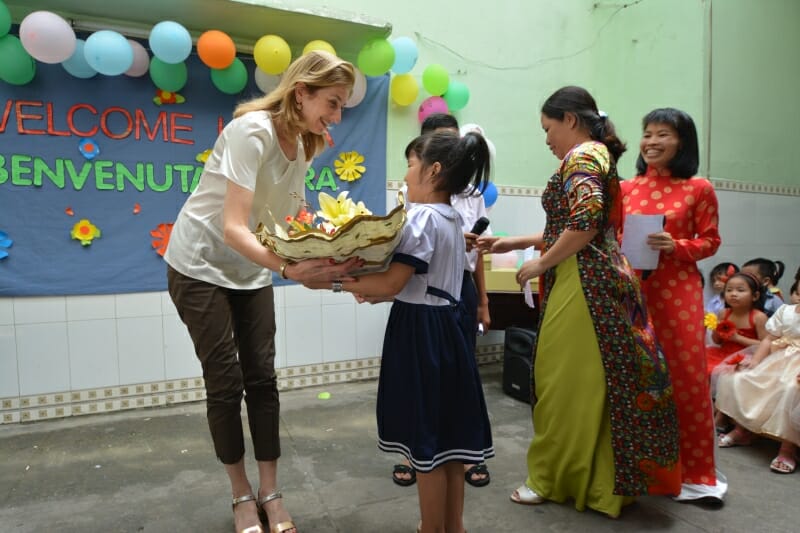
Dec 4, 2015 | Non categorizzato
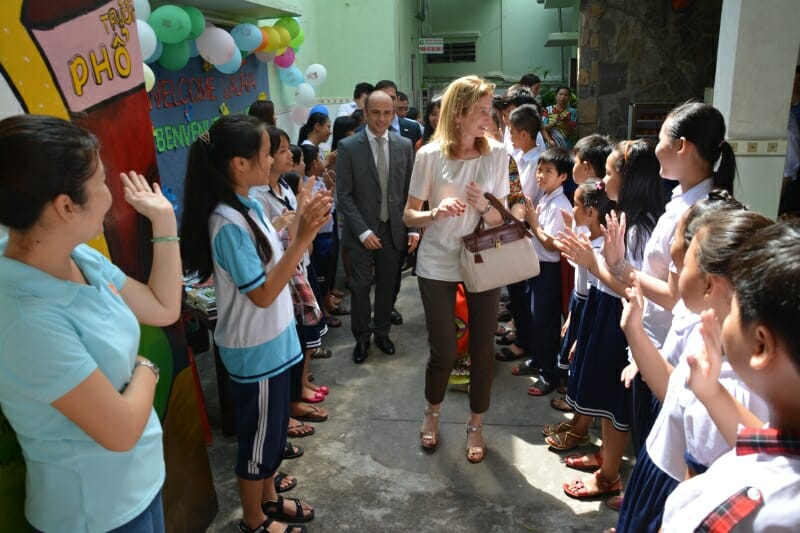 It was not at all easy to delineate a social project from the start, as it occurred for the Pho Cap School in Ho Chi Minh City, Vietnam. A few days ago, this project was honoured by the private visit of Laura Mattarella, daughter of the Italian Republic’s President, who accompanied her father on an official visit to the country. Laura Mattarella who came to visit the 100 children of the school, was welcomed simply – without protocols – by some members of the Focolare Movement, the current heads and collaborators of the School. Pho Cap School was established in 1998 by a Focolare priest, with the help of some university students who were among the first to adhere to the spirituality of unity: a project inspired by love for the poor who filled the Binh Thanh district. The school facility was an abandoned house, and once cleaned from the numerous syringes, the youth rebuilt the roof, then the toilets and electric and water systems. All was done with small donations received, and a lot of sacrifice. The youth became whitewashers, labourers, plumbers and electricians… One of them, now a Focolarino, remembers those days: “It was tough work, but the spirit of the Movement pushed us to love concretely. Also some labourers gave a hand. The project was really achieved together!” In a few weeks, the facilities became liveable and so schooling activities started. It was a matter of convincing the people to send their children, and making them understand that it was better for them to study rather than work. In fact, many of those children passed their days on the street of Saigon selling lottery tickets and did not go to school. The young people had to go from house to house to look for the “students.” After the first group was formed, soon also some girls joined in, and gave their time and enthusiasm to the project.
It was not at all easy to delineate a social project from the start, as it occurred for the Pho Cap School in Ho Chi Minh City, Vietnam. A few days ago, this project was honoured by the private visit of Laura Mattarella, daughter of the Italian Republic’s President, who accompanied her father on an official visit to the country. Laura Mattarella who came to visit the 100 children of the school, was welcomed simply – without protocols – by some members of the Focolare Movement, the current heads and collaborators of the School. Pho Cap School was established in 1998 by a Focolare priest, with the help of some university students who were among the first to adhere to the spirituality of unity: a project inspired by love for the poor who filled the Binh Thanh district. The school facility was an abandoned house, and once cleaned from the numerous syringes, the youth rebuilt the roof, then the toilets and electric and water systems. All was done with small donations received, and a lot of sacrifice. The youth became whitewashers, labourers, plumbers and electricians… One of them, now a Focolarino, remembers those days: “It was tough work, but the spirit of the Movement pushed us to love concretely. Also some labourers gave a hand. The project was really achieved together!” In a few weeks, the facilities became liveable and so schooling activities started. It was a matter of convincing the people to send their children, and making them understand that it was better for them to study rather than work. In fact, many of those children passed their days on the street of Saigon selling lottery tickets and did not go to school. The young people had to go from house to house to look for the “students.” After the first group was formed, soon also some girls joined in, and gave their time and enthusiasm to the project.  From a small group of students who were not given any meals, the school started to hand out daily snacks, and then lunch. The project continually developed, overcoming many difficulties. It was a success and became a school of “prestige” but which remained poor and for the poor just the same, though managing to give a convincing testimonial in a difficult suburban context. Most of the children come from Buddhist families but in the eyes of the children of Pho Cap, one can see trust, serenity and zest for life. Laura Mattarella noticed this and wanted to keep the photos of this “beautiful” meeting, as she said, in its simplicity, and so full of humanity, gentleness and relationships. The school directress commented: “The visit of the daughter of the Italian Republic President encouraged us to continue in the spirit that inspires us: living fraternity among us, the collaborators, and transmitting it to the students, so they in turn become messengers of this spirit in their families and in society.”
From a small group of students who were not given any meals, the school started to hand out daily snacks, and then lunch. The project continually developed, overcoming many difficulties. It was a success and became a school of “prestige” but which remained poor and for the poor just the same, though managing to give a convincing testimonial in a difficult suburban context. Most of the children come from Buddhist families but in the eyes of the children of Pho Cap, one can see trust, serenity and zest for life. Laura Mattarella noticed this and wanted to keep the photos of this “beautiful” meeting, as she said, in its simplicity, and so full of humanity, gentleness and relationships. The school directress commented: “The visit of the daughter of the Italian Republic President encouraged us to continue in the spirit that inspires us: living fraternity among us, the collaborators, and transmitting it to the students, so they in turn become messengers of this spirit in their families and in society.”
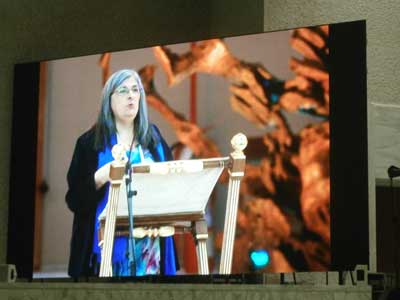
Dec 4, 2015 | Non categorizzato
 The profession of educators is a poorly paid one. This speaks volumes about the regard given to education by society and by governments. From November 18th to 21st, 2500 people gathered in Rome for a convention organised by the Congregation for Catholic Education, to commemorate the 50th anniversary of the Vatican Council II Declaration on Christian education, and the 25th of the Apostolic Constitution on Catholic Universities. “I came here with a Jewish colleague, and from India there were Catholics and a few Hindus,” said Nieves Tapia from Argentina, director of CLAYSS (Latin American Center for Service-Learning). “I felt that this was already a fruit of the Council: the Church in dialogue. With the motto, ‘Educating today and tomorrow: a renewing passion,’ we came together from all over the world, from very different situations.” The experiences from Catholic schools in frontier locations demonstrated the challenge of dialogue in action. As in Morocco, where teachers and students are Muslims; or in the Philippines, a Catholic country by majority, where the universities, also open to Muslims, encourage students to fast during Ramadan and reserve a place of prayer not only for Christians but also for Muslims. “It was an experience in a universal context,” affirmed Nieves Tapia, “not only because of our geographical origins, but also because of the types of schools and universities represented: public, private, and many schools who also work with the poor.” Pope Francis’ passion for education shone through in his address: “The pope responded to a few questions, and he spoke off the cuff, from his heart and with passion. He highlighted the need to go to the periphery, not to do charity, but because there, a new culture will be born. There we learn what profound wisdom there is in suffering. If we think about the great educational reforms (Don Bosco, Freire) we can say that they all came from the outskirts. Francis stressed furthermore the importance of working for the unity of the person, taking into account the mind, the heart, the hands; the importance of rebuilding the educational pact, that is the unity between the school and the family, the school and the community, the relationship with real life without closing oneself in the classroom. In addition, the importance of going out, which is also a response to the culture of the elite, the great danger of many educational systems, with the risk of leaving people out.” Among the subjects discussed in the convention, the pope implicitly underlined that of service learning, an educational program which actively involves the individual in the frontline… “It is a pedagogy that we have sought to enrich with the Latin American experience and with the spirituality of unity: service learning. It is necessary to allow the student to leave the classroom and begin to serve: to learn to do, to live, to be a better citizen. Research demonstrates that the learning cycle is not completed until the individual is able to practice what he has learned.” “This is confirmed when the teens learn to use their classroom knowledge to serve others. For example, in a technical school, instead of making a robot prototype, the youth construct wheelchairs for people who need them.” Service learning has been in use for almost 50 years, and there are thousands of universities and schools throughout the world that put into practice what is learned in order to serve others.” What prospects have emerged from the Convention? “The guidelines are those which the pope gave us. Above all, the necessity to renew our passion for education came into relief. ‘We must change education in order to change the world,’ said Pope Francis. We are already on the way and this is a sign of hope.”
The profession of educators is a poorly paid one. This speaks volumes about the regard given to education by society and by governments. From November 18th to 21st, 2500 people gathered in Rome for a convention organised by the Congregation for Catholic Education, to commemorate the 50th anniversary of the Vatican Council II Declaration on Christian education, and the 25th of the Apostolic Constitution on Catholic Universities. “I came here with a Jewish colleague, and from India there were Catholics and a few Hindus,” said Nieves Tapia from Argentina, director of CLAYSS (Latin American Center for Service-Learning). “I felt that this was already a fruit of the Council: the Church in dialogue. With the motto, ‘Educating today and tomorrow: a renewing passion,’ we came together from all over the world, from very different situations.” The experiences from Catholic schools in frontier locations demonstrated the challenge of dialogue in action. As in Morocco, where teachers and students are Muslims; or in the Philippines, a Catholic country by majority, where the universities, also open to Muslims, encourage students to fast during Ramadan and reserve a place of prayer not only for Christians but also for Muslims. “It was an experience in a universal context,” affirmed Nieves Tapia, “not only because of our geographical origins, but also because of the types of schools and universities represented: public, private, and many schools who also work with the poor.” Pope Francis’ passion for education shone through in his address: “The pope responded to a few questions, and he spoke off the cuff, from his heart and with passion. He highlighted the need to go to the periphery, not to do charity, but because there, a new culture will be born. There we learn what profound wisdom there is in suffering. If we think about the great educational reforms (Don Bosco, Freire) we can say that they all came from the outskirts. Francis stressed furthermore the importance of working for the unity of the person, taking into account the mind, the heart, the hands; the importance of rebuilding the educational pact, that is the unity between the school and the family, the school and the community, the relationship with real life without closing oneself in the classroom. In addition, the importance of going out, which is also a response to the culture of the elite, the great danger of many educational systems, with the risk of leaving people out.” Among the subjects discussed in the convention, the pope implicitly underlined that of service learning, an educational program which actively involves the individual in the frontline… “It is a pedagogy that we have sought to enrich with the Latin American experience and with the spirituality of unity: service learning. It is necessary to allow the student to leave the classroom and begin to serve: to learn to do, to live, to be a better citizen. Research demonstrates that the learning cycle is not completed until the individual is able to practice what he has learned.” “This is confirmed when the teens learn to use their classroom knowledge to serve others. For example, in a technical school, instead of making a robot prototype, the youth construct wheelchairs for people who need them.” Service learning has been in use for almost 50 years, and there are thousands of universities and schools throughout the world that put into practice what is learned in order to serve others.” What prospects have emerged from the Convention? “The guidelines are those which the pope gave us. Above all, the necessity to renew our passion for education came into relief. ‘We must change education in order to change the world,’ said Pope Francis. We are already on the way and this is a sign of hope.”

 “Here in Dallas,” they write from Texas, “we held a peace march to raise funds for Syrian refugees.” “In Houston “We got together for a day of team building. With games, work groups, and so forth we learned how to be a team. On November 22 we held an interreligious prayer for peace. It was attended by Jews, Muslims, Hindus and Christians. The Archbishop also joined us.”
“Here in Dallas,” they write from Texas, “we held a peace march to raise funds for Syrian refugees.” “In Houston “We got together for a day of team building. With games, work groups, and so forth we learned how to be a team. On November 22 we held an interreligious prayer for peace. It was attended by Jews, Muslims, Hindus and Christians. The Archbishop also joined us.”  From California they tell us that the benefit dinner for refugees from the Middle East included a hundred people from different cultures and Churches. After praying for the victims of the terrorist attacks in Beirut and Paris, some young people presented several of their projects for refugees, from around the world, which are connected to the United World Project, an international platform for providing visibility to small and large-scale projects. Everyone agreed that through dialogue everyone can sow hope in their own corners of the world. A benefit dinner will also be held in San Francisco in December. “From October 30th, at Centro Luminosa in Spain, a community prayer service will be held every Saturday evening, animated by different groups of people each time: youth, families, priests. . .) It will be the starting point for becoming more actively involved in concrete efforts for peace. There was a very energetic response from Bahia Blanca, Argentina, following the November 20th event in the Square. The idea was to invite everyone – absolutely everyone – to learn more about building peace. The launching of the event which was covered by a local radio station, was then broadcast on social media. At 19:30 the Square began to be covered in colour and music. Banners, posters and fliers offered ideas on how to resolve conflicts through dialogue and thus generate peace: giving a smile, discussing without shouting, doing to others what you would have done to you, and so on. On stage there were songs, brief presentations and dances (one choir offered to sing because of an invitation on Facebook.) “The experience of today is only a first step, which confirms that when you are together small things become powerful. And so it is urgent that we get moving beginning with our daily life.” In Parana, Argentina, the local community organised two ecumenical evenings of prayer for peace and for the persecuted because of their faith, animated by members of the different Churches with whom they are in contact. With testimonies of refugees and the families that took them in, besides the heartfelt prayer, they wanted to give visibility to the amount of road we have already covered in learning about, welcoming and including others. From Tokyo, Japan, they report a large sum of money that was gathered at the “Syrian Cafe” (a place for encounter and dialogue), which will be sent to Damascus. And we add that in Asunción, Paraguay, on December 18-20 there will be a camp for peace, organised by Teens for Unity, one of the junior sections of the Focolare.
From California they tell us that the benefit dinner for refugees from the Middle East included a hundred people from different cultures and Churches. After praying for the victims of the terrorist attacks in Beirut and Paris, some young people presented several of their projects for refugees, from around the world, which are connected to the United World Project, an international platform for providing visibility to small and large-scale projects. Everyone agreed that through dialogue everyone can sow hope in their own corners of the world. A benefit dinner will also be held in San Francisco in December. “From October 30th, at Centro Luminosa in Spain, a community prayer service will be held every Saturday evening, animated by different groups of people each time: youth, families, priests. . .) It will be the starting point for becoming more actively involved in concrete efforts for peace. There was a very energetic response from Bahia Blanca, Argentina, following the November 20th event in the Square. The idea was to invite everyone – absolutely everyone – to learn more about building peace. The launching of the event which was covered by a local radio station, was then broadcast on social media. At 19:30 the Square began to be covered in colour and music. Banners, posters and fliers offered ideas on how to resolve conflicts through dialogue and thus generate peace: giving a smile, discussing without shouting, doing to others what you would have done to you, and so on. On stage there were songs, brief presentations and dances (one choir offered to sing because of an invitation on Facebook.) “The experience of today is only a first step, which confirms that when you are together small things become powerful. And so it is urgent that we get moving beginning with our daily life.” In Parana, Argentina, the local community organised two ecumenical evenings of prayer for peace and for the persecuted because of their faith, animated by members of the different Churches with whom they are in contact. With testimonies of refugees and the families that took them in, besides the heartfelt prayer, they wanted to give visibility to the amount of road we have already covered in learning about, welcoming and including others. From Tokyo, Japan, they report a large sum of money that was gathered at the “Syrian Cafe” (a place for encounter and dialogue), which will be sent to Damascus. And we add that in Asunción, Paraguay, on December 18-20 there will be a camp for peace, organised by Teens for Unity, one of the junior sections of the Focolare.






 If you want to go to Okinawa from Kagoshima, midway along the route – after spending a night on the ship – you will come across the island of Amami. It is an enchanting place for its natural beauty, and the profound bond between the inhabitants themselves and with the environment. They say that in the rice planting season, the inhabitants had the custom of helping one another by going to each other’s homes when necessary. It was a lifestyle which the islanders still call the “bonding” spirit. Missionaries have landed on the Island ever since the 19th century, bringing the Christian message which took root among the population. With pride, the inhabitants of Amami boast of three bishops born on their island, besides a great number of priests, religious men and women. It was precisely one of these priests, who launched an idea in 1996 during a retreat held on the island: “Why don’t you look into the
If you want to go to Okinawa from Kagoshima, midway along the route – after spending a night on the ship – you will come across the island of Amami. It is an enchanting place for its natural beauty, and the profound bond between the inhabitants themselves and with the environment. They say that in the rice planting season, the inhabitants had the custom of helping one another by going to each other’s homes when necessary. It was a lifestyle which the islanders still call the “bonding” spirit. Missionaries have landed on the Island ever since the 19th century, bringing the Christian message which took root among the population. With pride, the inhabitants of Amami boast of three bishops born on their island, besides a great number of priests, religious men and women. It was precisely one of these priests, who launched an idea in 1996 during a retreat held on the island: “Why don’t you look into the  Immediately some of those present contacted the centre of Nagasaki and the following year, two of them, after a night on the ship and travel of more than five hours by car, arrived at Sasebo, two hours away from Nagasaki. A Mariapolis was then underway: a happening of a few days for those who wanted to know more about the
Immediately some of those present contacted the centre of Nagasaki and the following year, two of them, after a night on the ship and travel of more than five hours by car, arrived at Sasebo, two hours away from Nagasaki. A Mariapolis was then underway: a happening of a few days for those who wanted to know more about the


